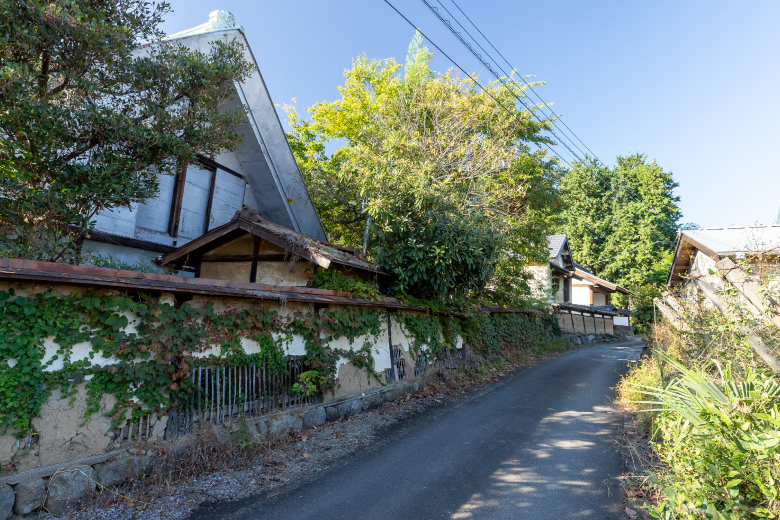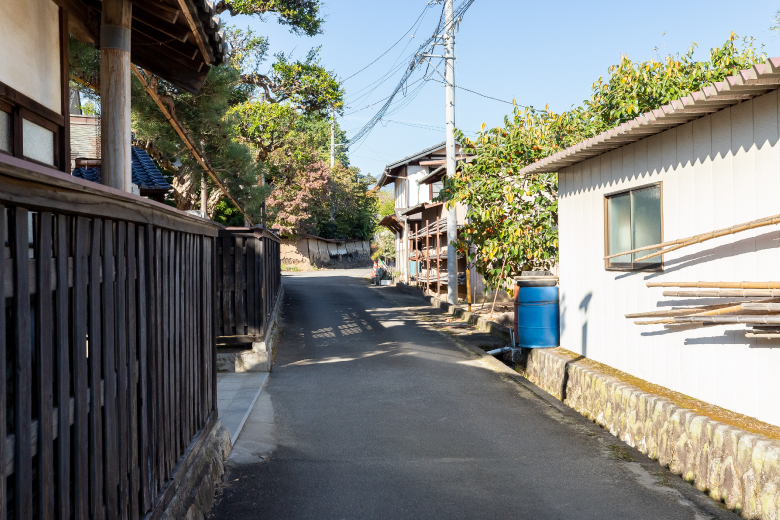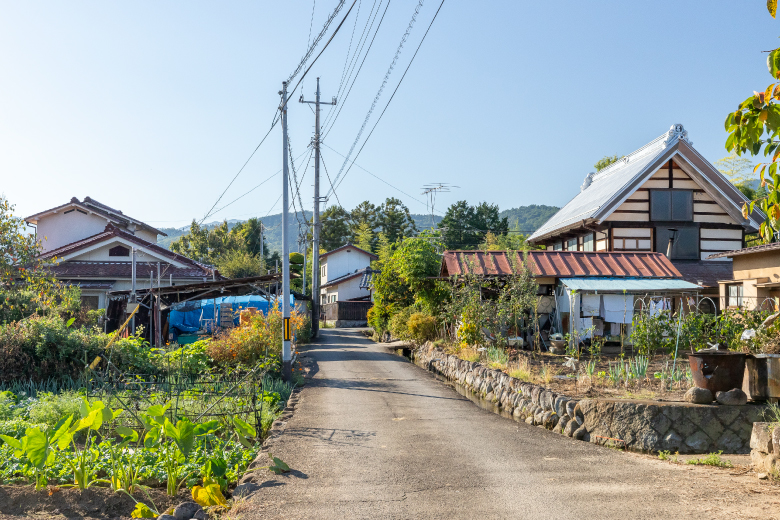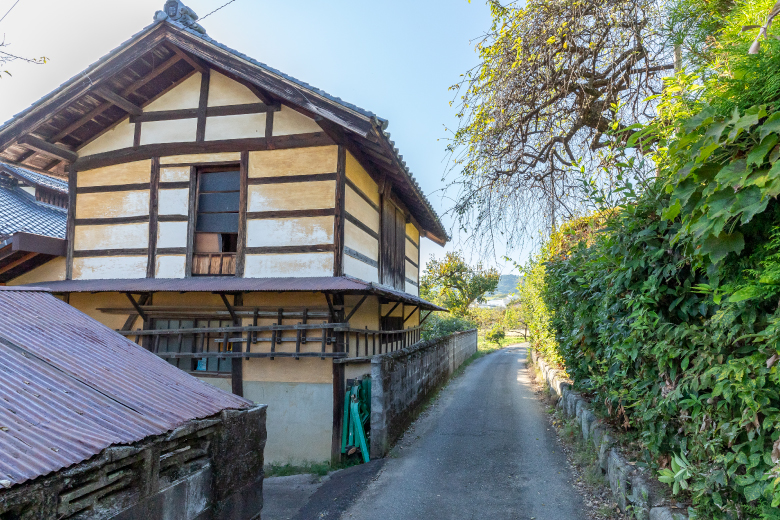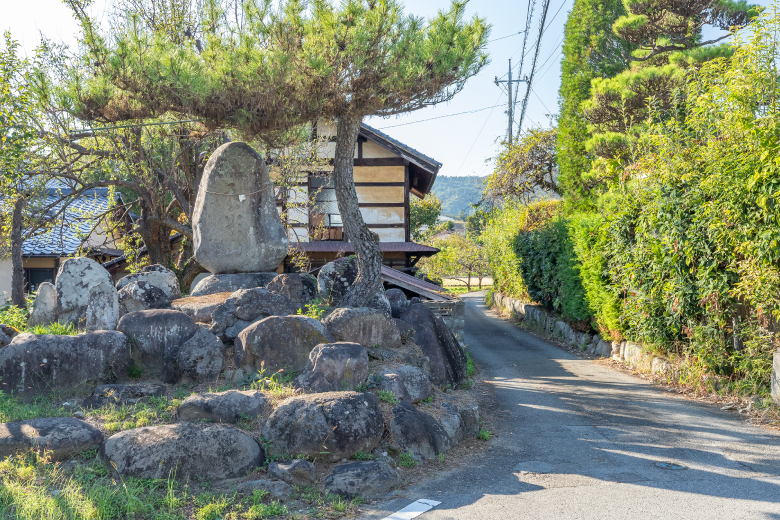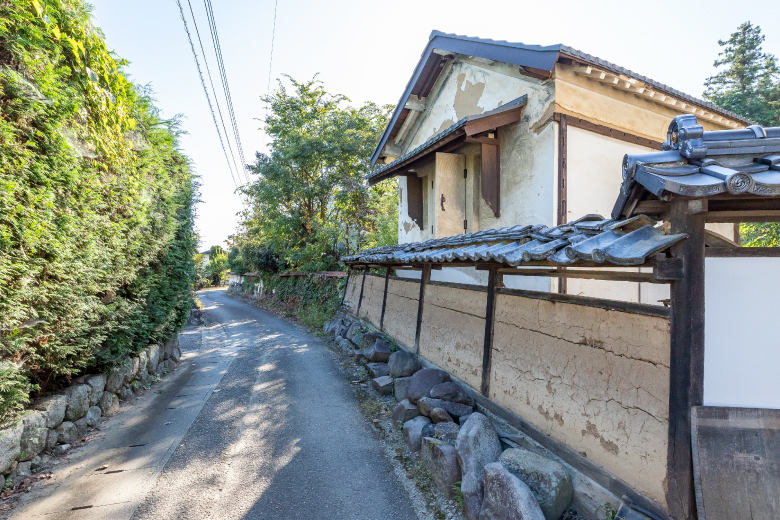The “Bushi” in the name Bushibara is today written using characters that mean “warrior,” but it used to be written using characters that mean “Buddhist priest” in ancient times. It is a quaint village that retains the original landscape of Chichibu Okan Road.
A Jizo statue, Bato Kannon statue, and Banreito tower (literally, “Tower for a Thousand Souls”) dot the old road along which a stone wall still stands between peach orchards and grape vineyards, in addition to three folk houses that retain their erstwhile earthen walls, earthen storehouse, and gate.
Particularly unique to the Kofu Basin are Yagura-style farmhouses built in the style of a guard tower renovated as facilities for raising silkworms. They have raised roofs to let ample light and wind into the second floor of the house.
Bushibara Village is known today as a production region of Korogaki persimmons. These persimmons can be seen hung from the eaves to dry during the period from November to December every year.
A Jizo statue, Bato Kannon statue, and Banreito tower (literally, “Tower for a Thousand Souls”) dot the old road along which a stone wall still stands between peach orchards and grape vineyards, in addition to three folk houses that retain their erstwhile earthen walls, earthen storehouse, and gate.
Particularly unique to the Kofu Basin are Yagura-style farmhouses built in the style of a guard tower renovated as facilities for raising silkworms. They have raised roofs to let ample light and wind into the second floor of the house.
Bushibara Village is known today as a production region of Korogaki persimmons. These persimmons can be seen hung from the eaves to dry during the period from November to December every year.
COURSE MAP
Let's go to the next spot!
- 2200m / 8min by bicycle
- 04Ijiri Segi
